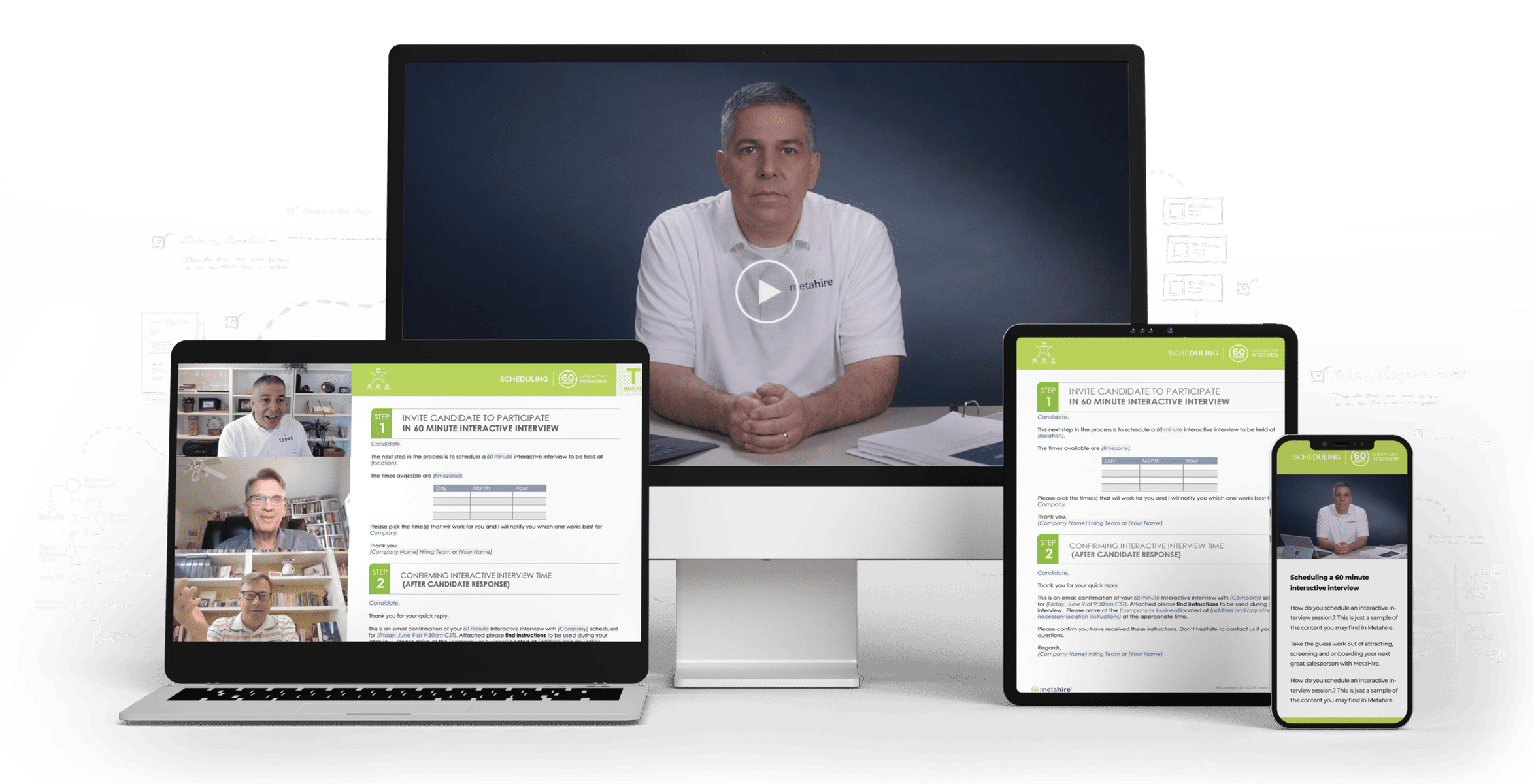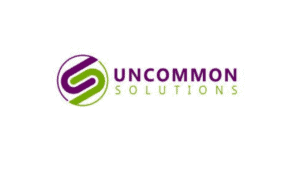Why Companies Need Both
A dynamic tech start-up was on the brink of revolutionizing its industry. The team equipped themselves with cutting-edge technology and a passion for innovation. Leadership ensured their team was equipped with the latest sales enablement tools, boasting a sophisticated CRM system and an arsenal of cutting-edge resources at their fingertips.
Yet, despite these advantages, the start-up faced a daunting challenge. The sales team, while technologically adept, struggled to truly connect with clients, understand their core issues, and close deals. The advanced tools were underutilized, as the team lacked the sales skills and techniques to leverage these resources effectively.
Recognizing the crux of the problem, the start-up’s leadership took decisive action. They initiated a comprehensive sales training program focused on consultative selling, active listening, and problem-solving. The program’s meticulous design bridged the gap between having cutting-edge tools and the ability to use them to uncover and address each client’s unique needs. The sales leadership team, actively engaging in leadership training, steered the transformation by embracing interactive workshops, role-playing scenarios, and personalized coaching sessions. This collective commitment to growth reshaped the team’s approach, shifting from transactional interactions to meaningful conversations.
The distinction and simultaneous necessity of sales training and sales enablement becomes clear. Sales training is indispensable for cultivating the fundamental competencies and insights that sales professionals require to understand and engage potential clients effectively. The educational backbone prepares your team for the complexities of the sales process.
Conversely, sales enablement is the strategic infrastructure that furnishes your team with the precise tools, resources, and aligned support they need to apply their training efficiently in real-world scenarios. Companies with a dedicated sales enablement function improve their sales training effectiveness by 29% (Forbes).
For a sales manager, integrating both elements is not just a balanced strategy but a pragmatic approach to ensure that your team’s skills are learned and optimally leveraged, leading to a more profound and consistent impact on your organization’s sales outcomes. This dual investment in nurturing skills and providing support sets apart a thriving sales operation from a merely functional one.
Sales Enablement vs. Sales Training: What’s the Difference?
Two key concepts that often get confused are sales enablement and sales training. Ever hear one of these terms and think, “What’s the difference?”
Although both aim to boost sales effectiveness, they serve distinct purposes and achieve different outcomes. We’re here to highlight their unique roles and explore how integrating both can lead to a more empowered and efficient sales force.
What makes each concept stand out, and why a hybrid approach (mixing sales enablement and sales training) might be exactly what your team needs to thrive? Keep reading to find out.
Understanding Sales Training
Sales training fundamentally equips sales representatives with the necessary skills to excel. It involves structured sessions focused on product knowledge, sales tactics, and effective communication strategies. The primary goal here is to enhance the proficiency of sales teams, ensuring they understand how to present products or services persuasively and close deals successfully.
For some organizations, sales training is generally a one-time, formal event with specific learning objectives and evaluation methods offered to newly hired sales reps to assist in their onboarding process. It provides critical knowledge to sales reps but lacks ongoing reinforcement or accountability for implementing what they’ve learned. Our version of sales training takes a longer-term, ongoing approach to embed behavioral change, improve sales skills, and achieve sustainable results.
So — when is the best time to invest in sales training?
Sales reps who consistently engage in sales training become more confident, resilient, and adaptable to different customers’ needs. This foundation of knowledge helps them effectively identify customer pain points, develop tailored solutions, and communicate the value proposition convincingly. Sales leaders must determine the fundamental skills necessary for their sales team’s success and provide targeted training that reinforces these foundational competencies.
Sales Training: Laying the Foundation
Today’s top sales performers understand that their role is less about selling and more about guiding the customer through a journey. Sales training must instill a customer-centric mindset, ensuring that sales professionals are skilled in listening, understanding, and responding to the customer’s needs. It’s about building relationships based on trust and value. Sales training equips your sales team with the skills, knowledge, and methodologies they need to engage prospects and close deals. It’s akin to teaching someone to fish, providing them with the bait, rod, and techniques to catch fish independently.
Key Components of Sales Training
- Skill Development: Sales training focuses on developing individual skills, from communication and negotiation to time management and product knowledge.
- Performance Improvement: Regular training sessions ensure your team is up-to-date with the latest sales trends, technologies, and best practices, improving their overall performance.
- Problem-solving: Sales training encourages critical thinking through participatory learning, allowing your team to tackle real-time challenges creatively and effectively.
Sales Training Actionable Tips
Customize Training to Individual Needs: Assess the strengths and weaknesses of each sales rep and tailor the training to address specific gaps. Utilize one-on-one coaching sessions to provide personalized guidance and feedback.
Incorporate Microlearning: Break down training content into short, focused segments that can be easily consumed and retained. Utilize platforms that support microlearning to keep your team engaged and make learning more manageable.
Leverage Role-Playing Exercises: Regularly conduct role-playing sessions to simulate real-life sales scenarios to help sales reps practice their ability to uncover prospect pain, handle objections, and refine their approach in a low-pressure environment.
Encourage Peer Learning: Facilitate knowledge sharing among your team. Encourage more experienced reps to share their insights and strategies with newer team members, fostering a collaborative, participatory learning environment.
Track and Measure Progress: Set clear training goals and key performance indicators (KPIs). Review these metrics regularly to assess the effectiveness of your training program and make data-driven adjustments as needed.

Example of Sales Training
Tomas, a brand new sales rep for XYZ Corporation, just completed his first week of sales training. Throughout the onboarding process, Tomas learned the company’s history and culture, product/service line-up, pricing structures, target customer profiles, prospecting tactics, and the company’s philosophies toward customer service and selling. He was taught how to be the ultimate Buyer Facilitator through dedicated online learning modules, peer-to-peer exercises, and role-playing with managers. Tomas also learned to confidently present the company’s products/services’ value proposition.
Want more info? Read our article about how to pick the best sales training program.
“If you are not willing to learn, no one can help you.
Zig Ziglar
If you are determined to learn, no one can stop you.”
What is Sales Enablement?
Sales enablement provides the tools, resources, and support necessary for sales reps to succeed. It’s a more comprehensive and holistic approach beyond traditional training methods.
Some organizations have dedicated sales enablement teams that work closely with sales leaders to support sales reps in achieving their targets. Their work involves identifying the areas where sales reps need help, providing relevant content and tools, and ensuring a smooth process for accessing resources while keeping everyone aligned around common goals.
Sales enablement ensures sales representatives have everything they need to engage customers successfully, from updated product information to marketing collateral and data-driven insights into customer behavior. This approach empowers sales reps to deliver a more personalized and practical sales experience, ultimately building stronger customer relationships.
Sales Enablement: The Strategic Framework
While sales training ensures your team knows how to fish, sales enablement provides them with the boat, the best fishing spots, and the suitable climate to fish in. Technology is reshaping the sales landscape, and embracing it is not optional; it’s imperative.
Practical sales training incorporates the latest tools and technologies, ensuring that sales professionals are familiar with these resources and proficient in leveraging them to enhance their sales process. From CRM systems to social selling platforms, understanding how to integrate technology into your sales strategy can be a game-changer. Organizations with sales enablement have a 15% better win rate on forecasted deals than those without (CSO Insights). Sales enablement is a strategic, ongoing process that equips your sales team with the tools, content, and information they need to sell effectively.
Key Components in Sales Enablement
- Content Provision: Sales enablement ensures your team has access to the right content at the right time – from case studies and whitepapers to product sheets and presentations.
- Technology and Tools: Implementing user-friendly tools and technologies that streamline the sales process, from customer relationship management (CRM) systems to automation tools.
- Cross-functional Alignment: Sales enablement involves aligning your sales team with marketing, product, and customer service departments, ensuring a cohesive approach to the customer journey.
Sales Enablement Actionable Tips
Streamline Content Access: Organize and categorize sales content so it’s easily accessible. Utilize a content management system where reps can quickly find and utilize the most relevant and up-to-date resources.
Integrate Sales Tools with CRM: Ensure full integration of all sales tools with your CRM system to streamline the sales process, allowing reps to spend more time selling and less time navigating between different platforms.
Provide Mobile Access: Ensure that sales materials and tools are mobile-friendly. This will allow reps to access information and resources on the go and ensure they’re always prepared, even when away from the office.
Offer Continuous Training on Tools: Regularly provide training on effectively using sales enablement tools. As new features are released or new tools are adopted, ensure your team is up-to-date and proficient.
Collect and Act on Feedback: Regularly solicit feedback from your sales team on the tools and resources provided. Use this feedback to improve continuously, ensuring that your sales enablement strategy remains aligned with your team’s needs and challenges.

Example of Sales Enablement
Now ramped up and comfortable in his role, Tomas is beginning to get up to speed on competitors and best-selling practices. He still needs access to product information, but he’s now looking for more advanced resources to help him navigate buyer objections or win against competitors. Sales enablement plays a key role here by providing Tomas with competitor intel, sales coaching sessions on negotiation tactics, relevant case studies, and other valuable resources. Now, Tomas is more confident in addressing objections, demonstrating the company’s competitive advantage against others in the market.
Personalization Strategies
A blend of sales training and enablement is essential to navigate your team towards closing more deals and increasing revenue. As we’ve established, sales training provides the groundwork, building the individual skills of your sales representatives. In contrast, sales enablement provides a strategic framework that enables the utilization of those skills.
Integrated Learning and Tools: While sales training equips your team with the necessary skills, sales enablement provides them with the tools to apply those skills most effectively.
Feedback and Adaptation: Sales enablement offers analytics and insights that can feed back into sales training, helping to identify areas for improvement and tailoring training to address those needs.
Consistency and Reinforcement: Sales training is not a one-time event but an ongoing process. Similarly, sales enablement requires continuous refinement and alignment with business goals and market changes.
It’s clear that both sales training and sales enablement are crucial, yet they serve very different purposes. Sales training is about giving your team the know-how. It’s giving them a playbook with a philosophy and process for understanding customer needs and responding. Continuous training gives 50% higher net sales per employee than in companies with less frequent training (The National Sales Executive Association). But honing their skills isn’t enough if your team doesn’t have the right tools to put that knowledge into practice.
That’s where sales enablement comes in. It’s about making sure your team has what they need—be it the right technology, content, or support—to make the most of their training. For a sales manager, blending these two is more than just a good strategy; it’s essential. It ensures your team isn’t just knowledgeable and well-equipped but ready to tackle real-world challenges.
When you strike that balance, you see your team not just meeting targets but exceeding them. It’s about creating a setting where training and tools combine seamlessly, leading to tangible results and growth.
Why Combining Sales Enablement and Sales Training Works
Sales enablement and sales training work hand-in-hand to create a dynamic learning environment that results in better-prepared sales reps and overall sales excellence. A hybrid approach combines these concepts to tackle the most common challenges sales teams face.
Addressing Knowledge Gaps
Sales reps need to be knowledgeable about their products and services through dedicated sales training, but they also require support in building essential skills like active listening, relationship-building, and problem-solving. Sales training addresses knowledge gaps through structured sessions, while sales enablement provides ongoing resources that reinforce learning and help build necessary competencies.
Enhancing Sales Performance
By implementing a hybrid approach that includes both sales training and sales enablement, organizations can create a more comprehensive approach to improving sales performance. Sales training provides the foundation of knowledge and skills, while sales enablement offers continuous support and resources to drive growth and success.
Improving Collaboration
Sales enablement fosters collaboration between departments, such as marketing, product development, and customer service. By creating and delivering valuable resources for sales reps, these teams can align their efforts towards a common goal of driving sales and satisfying customers.

How to Determine the Right Sales Enablement and Training Strategy
Every organization has unique goals, sales processes, and team dynamics that require a tailored approach to sales enablement and training. To determine the right strategy, organizations should consider the following factors:
- Identifying the ideal sales training company and the specific training needs based on sales objectives and customer trends
- Understanding the sales process and how sales enablement can support it through enhanced materials and further education
- Determining the best format for delivering training and resources (e.g., online, in-person, self-paced) based on team structure, personal preference, etc.
- Assessing current strengths and areas for improvement within the sales team with formal sales evaluations
- Establishing metrics for tracking progress and evaluating success to hold leadership and sales reps accountable
Consider all these factors to create a tailored sales enablement and training strategy that aligns with your organization’s goals and objectives. This will lead to a more effective and efficient sales team, ultimately driving growth and success for the organization.
Final Thoughts on Sales Training and Sales Enablement
Both sales training and sales enablement are critical components of a successful sales team. While sales training focuses on building knowledge and skills, sales enablement takes a more comprehensive approach by providing ongoing resources and support to drive success.
Organizations should recognize the value of both concepts and work towards creating a cohesive strategy that combines these two approaches. By doing so, they can create a more knowledgeable, confident, and effective sales force that can deliver exceptional customer experiences and drive business growth.
So remember, sales training will lay the foundation for success, while sales enablement keeps the momentum going and empowers sales reps to reach their full potential. With this combined approach, organizations can achieve a competitive advantage in their industry.
Remember Our Tech Start-up?
As the sales team’s skills evolved, the magic began to happen. The once-underutilized enablement tools became instrumental in their newfound selling success. The sales cycle shortened, client satisfaction surged, and deals that once seemed elusive were now closed confidently and precisely. The tech start-up not only reversed its sales dilemma but also set a new standard for how integrating top-tier sales training with advanced enablement tools can create a formidable force in the competitive tech landscape. And they crushed it, happily ever after.
“Your competitors can copy your product or service,
Brian Goonan, Partner at Ernst & Young
but they can’t copy the relationships you build with customers.”







